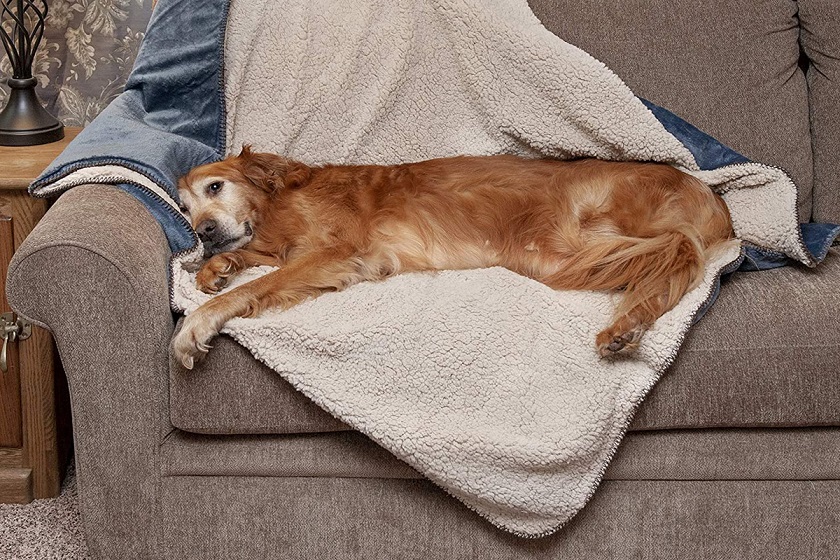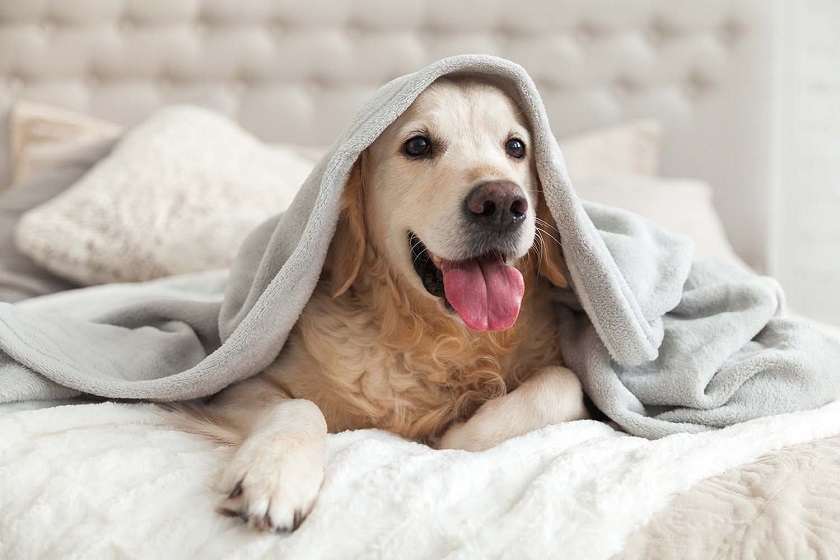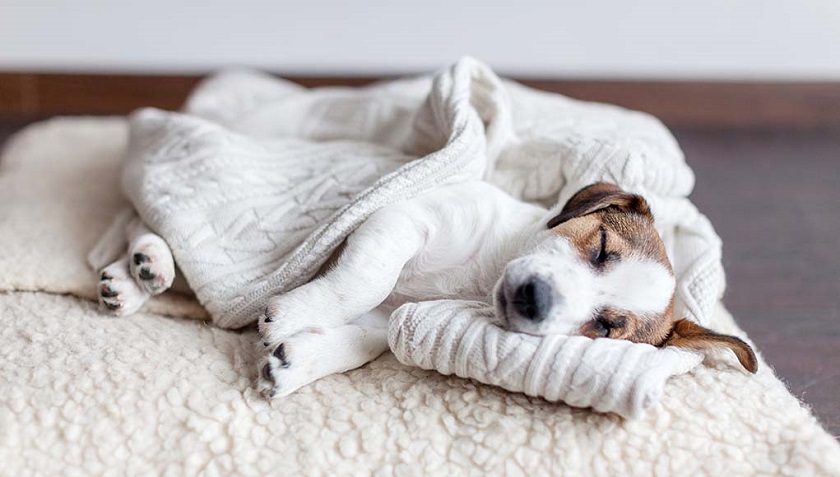
Your Guide to Dog Blankets
Your dog can be one of the most loyal and beloved companions you’ll ever have. That said, taking care of their needs and keeping them happy and healthy is obviously important to you. Dogs are animals, and just like any living creature, they need a few things to live comfortably and happily. They need a good bed, some water and food during the day, toys to play with and lots of love, too.
There are many reasons to get a dog its own bed. Making sure they have a comfortable place to sleep contributes to their overall health and happiness. However, in many cases, a bed is not enough. Especially when it comes to small breeds, young pups who still have trouble regulating their body temperature and dogs that sleep outside.
In these situations, a dog bed blanket is an essential piece of your pet’s bedding. When your dog is snuggled up in a blanket, it feels warm and secure, which helps them sleep better. Dogs sometimes get cold when they sleep, so blankets can help prevent that from happening.
Choosing the right blanket for your pup can be a little confusing. However, with a few key things to keep in mind when choosing a dog blanket for your furry friend, you’ll have them cosy and warm in their bed in no time.
Contents
Determine the Purpose of the Blanket

When purchasing pet blankets for dogs, it is important to know the purpose of the blanket before making a purchase. It is also important to consider any allergies your dog may have.
Here are a few questions to ask yourself:
- Is this blanket going to go in my car? – If so, the answer is yes. You will want a blanket that is waterproof and easy to clean. If you have an allergy-prone dog, then you may want to get a microfiber or fleece type of material. If your dog has no allergies, then any type of material will work.
- Is this blanket going to go in my crate? – If so, then you will want something breathable and easy to clean. Fleece or cotton are both good choices for this purpose. Microfiber or acrylic may also work well depending on the size of your crate and how often it will be washed.
- Is this blanket going to be used for a bed as well? – If so, then you may want something comfortable for them but easy to wash as well. Fleece or cotton are both good choices for this, and they’re fairly inexpensive as well. This is probably the best choice if you want something cheap and practical.
Make Sure to Choose the Right Size

The next thing you need to do when choosing a dog blanket is to measure your dog and make sure that you get the correct size of blanket for them. When measuring, start by measuring from the base of your dog’s neck (where the collar usually sits) down to the base of their tail. Next, measure from the widest part of their chest across their body. This is usually just behind the front legs.
A blanket that is too big may move around on your dog or be difficult for them to get snuggled into. On the other hand, a blanket that is too small will restrict movement and be uncomfortable for your dog to wear.
The Material Is Very Important
You’ll want to consider the material because this will affect your blanket’s durability and how much machine washing it can handle. The most common materials used in dog blankets are fleece, microfiber and cotton.
Fleece is a very warm material and is less likely to absorb odours than other materials. Microfiber is also very warm and it absorbs water better than cotton, but it will eventually start to smell if you don’t wash it often enough. Cotton is less effective at absorbing water than microfiber but it’s easy to machine wash and dry.
Chew-proof blankets are more durable than regular blankets, but they’re not completely invincible. If your dog is determined enough he may eventually chew through any blanket so it’s best to buy a new one instead of trying to repair it when that happens.
Waterproof blankets are ideal for rainy days or camping trips because they will keep your dog dry even if he’s lying on wet grass or mud puddles! This type of blanket comes in two different types: polyester and nylon. Polyester is a stronger material that holds up well to wear and tear, while nylon is a softer material that is more comfortable for your dog to lie on.
How to Maintain Blankets for Dogs

Most blankets can be washed with your regular laundry in cold water on the gentle cycle. While washing, it is best to add ¼ cup of vinegar to the water as an odour neutraliser. This will help to prevent smells from building up in the blanket, even after multiple washes. A small amount of laundry detergent can also be added if desired.
After washing, your dog’s blanket should be line dried or put in the dryer on low heat for 10-15 minutes. Never put a wet dog bed blanket in a dryer without first using low heat! Once the blanket has been partially dried, it can then be transferred to a cage or hung over a railing until completely dry.

